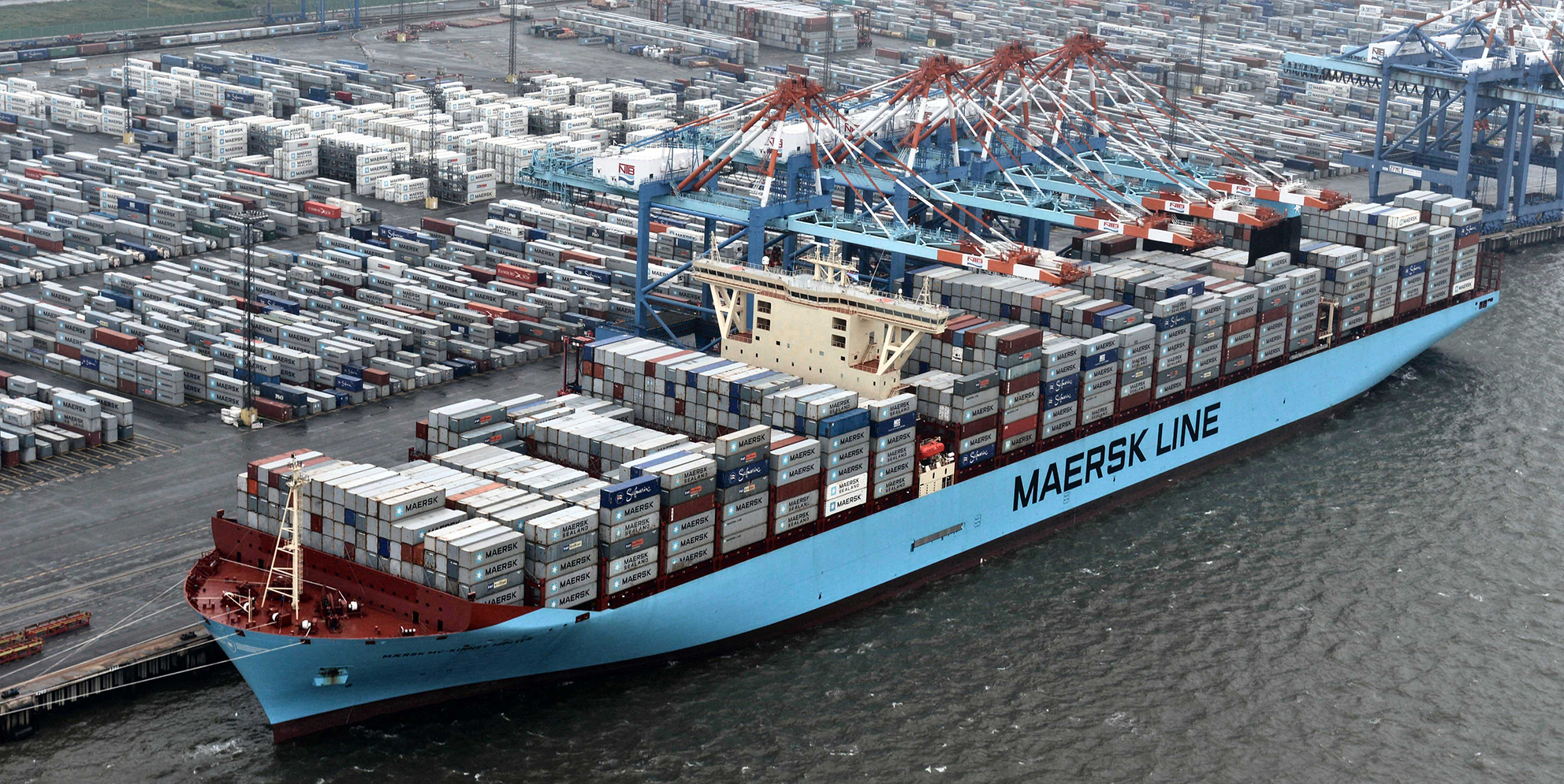The world’s largest container shipping company Maersk Line has resumed calls to Iran after a five-year hiatus and hopes that access to a new, rapidly growing market will help it through the current downturn.
Maersk Line is the global container division and the largest operating unit of the A.P. Moller–Maersk Group, a Danish business conglomerate.
“We are excited to announce that we have reinstated our services in Iran. This means that our customers can once again utilize our global network, large fleet of vessels and equipment, weekly departures, superior transit times and innovative suite of e-business solutions, both to and from Iran, subject to country specific regulations,” reads a note on the Copenhagen-based company’s website.
The resumption of service to Iran comes nearly a year after Maersk’s 2M Alliance partner Mediterranean Shipping Company once again began sailing to the second-largest country in the Middle East.
“Global container trade has matured over the past years and is growing at a slower pace. Iran has the potential to be the market that stands out with faster growth,” Christian Juul-Nyholm, managing director, UAE cluster, Maersk Line, was quoted as saying by JOC.com.
The Iranian market represents around 700,000 forty-foot-equivalent units, said Marcus Connolly, the head of sales, UAE Cluster.
“It is hugely exciting that after a five-year absence, we are again able to offer Maersk Line services to customers to and from Iran. After a period of relative isolation, access to this new market will present significant growth opportunities for Maersk Line in a market that today represents approximately 700,000 FFE but is expected to grow significantly in the coming years,” he said.
Iran’s largest trading partners are China, the UAE, Iraq, Turkey and South Korea. Ties between Iran and South Korea have warmed up after the sanctions were lifted and the Islamic Republic of Iran Shipping Lines over the summer launched a new service between the two countries.
China and the UAE in 2015 were by far the largest trading partners with Iran, amounting to 24.7% and 17.2%, respectively, of Iran’s international trade volumes, according to Global Trade Atlas. Iraq represented 7.6%, Turkey, 6.4%, and South Korea 5.8%.
Those shares have shifted thus far in 2016, as Iran reestablishes trade ties that were cut off by the sanctions. China so far this year amounted to 22.2% of Iran’s international trade, while the UAE shrank to 15.6%, Iraq rose to 8.3%, Turkey increase to 8% and South Korea rose to 6.9%, according to GTA.
Opportunities on Two Fronts
The opening of Iran presents opportunities on two fronts for Maersk Line parent Maersk Group, which recently split itself into two units, Transport & Logistics and Energy, to better weather the down market.
Container lines, not just Maersk, have been struggling since the 2010 financial crisis, when the GDP multiplier, which refers to the rate of growth in container shipping as it relates to global GDP growth, evaporated. The multiplier from 2000 to 2008 was 2.2x with x being global GDP growth, which had averaged around 4%. The multiplier since 2010 has shrunk to 1.1x while GDP growth fell to an average of 2.9%.
That slower rate of growth dovetailed with a surge of mega-ship newbuilds that have created an enormous capacity surplus and the conditions that led to Hanjin Shipping’s abrupt collapse. That capacity glut is so large however, that Hanjin’s failure did little to resolve the issue, as spot rates on the trans-Pacific and Asia-Europe trades showed in the month of September.
Spot rates on the trans-Pacific spiked in the days after Hanjin’s failure, but remained flat through September, rising again only last week ahead of a general rate increase. Asia-Europe, where Hanjin’s bankruptcy vaporized 150,000 twenty-foot-equivalent units of capacity overnight, also failed to make any serious gains.
While Asia-Europe spot rates did rise in the aftermath, they returned to pre-Hanjin levels not long after before making an unexpected gain last week.
Given these difficult conditions, other container lines have also looked to Iran for volume growth. CMA CGM, for example, teamed up with IRISL to share vessel capacity and jointly operate routes and marine container terminals.
“We are excited to bring Iran closer to the rest of the world via our comprehensive network and access to worldwide markets, in line with our continued efforts of enabling global trade. With our focus on superior E2E customer experience, we are confident of propelling our customers’ ambitions to realize the full potential of the thrilling Iran market,” said Kapil Mehta, head of trade and marketing, UAE Cluster.
Maersk Line is the global container division and the largest operating unit of the A.P. Moller–Maersk Group, a Danish business conglomerate. It employs approximately 7,000 seafarers and approximately 25,000 land-based people. Maersk Line operates over 600 vessels and has a capacity of 2.6 million TEU. The company was founded in 1928.


